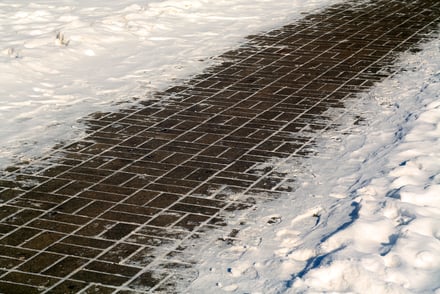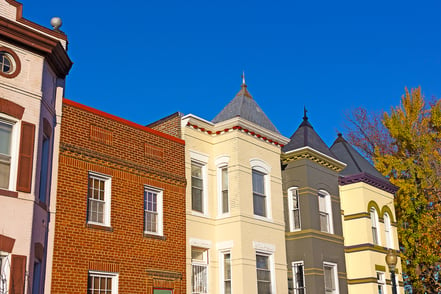If you are the owner of a brick home, you may be tempted to choose “spot tuckpointing" when you see signs of damage on an otherwise solid wall. Homeowners and contractors alike consider it be an inexpensive and quick solution to an immediate problem. That's not always the case.
Although the practice is prevalent and visible all over Washington DC, spot tuckpointing is merely a band-aid approach that will neither stabilize a building nor halt its continued deterioration.
What is Tuckpointing?
Tuckpointing – sometimes called “repointing” – describes the restoration of historic brick buildings by removing deteriorated, damaged and missing mortar between brick and other masonry joints and replacing it with lime-based mortar. This term applies to brick restoration on both building facades and chimneys. When done correctly, tuckpointing will ensure the structural integrity, longevity, and value of buildings constructed of brick during the 18th, 19th, and early 20th centuries.
What is Spot Tuckpointing?
Spot tuckpointing is the process of repointing on a smaller scale. It involves addressing only the major open holes and settling cracks in an otherwise solid wall. Fundamentally it's just plugging up holes to stave off rapid deterioration.
Why Choose Spot Tuckpointing?
Homeowners give two main reasons for choosing spot tuckpointing:
- Expense. When a budget absolutely will not allow substantial repointing, it is a way to control the damage until a complete remediation is affordable.
- Damage is minimal and specific. Minor settling cracks or open holes and cracks caused by specific problems such as water damage from leaky downspouts on a home that has been repointed within the last 15 years or so.
Why Avoid Spot Tuckpointing?
Specialists in historic brick preservation and repair name two major problems associated with this type of brick repair:
- It's actually not less expensive. Continually patching something that needs replacing is not cost-effective. Over time weather causes damage to brick and mortar and if left untreated can cause water entry, brick movement and even walls to collapse. It will most likely cost much more to repair the damage later.
- It’s unattractive. Constant patching of areas on a wall can make a brick wall look more like a ragged quilt and detract from the home’s curb appeal. You risk losing the value of your historic brick home if it is not well maintained.
There are strong arguments for brick tuckpointing the right way. A freshly repointed wall should last 25+ years. The quality of the work is key to preserving historic brick and mortar facades. A job done well vs. a poor job could result in a difference of decades in lasting work.
Renaissance Development, a leader in brick restoration and historic preservation, specializes in the repair and restoration of historic DC brick homes. We love old homes and are committed to preserving their historic charm and value. If your historic home renovation plan includes masonry or brick repair, contact us for a free site visit and project quote.
Tags:
RepairSep 5, 2019 12:14:23 PM



